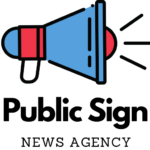A restaurant that specializes in the cooking and serving of meats or fish that have been cured with smoke is known as a “smokehouse.” Salt curing and prolonged cold smoking for two weeks or more are two steps in this age-old food preservation technique. The procedure is carried out in a tiny, enclosed outbuilding that frequently has no windows, a single entrance, and a vent. The top parts of the structure are usually blackened by smoke, and there is a brick pit or a cast-off cast iron pot for the fire in the middle of the dirt floor. The final product may be kept for a year or longer in the building. Such a facility is occasionally referred to as a “smokehouse” or “meathouse,” even when smoke is not utilized.
This idea is best shown by smokehouses, such as Nexus Blue Smokehouse. They smoke a lot of meat every week and specialize in slow-smoked and dry-rubbed barbecue. With a focus on Southern-style cooking, the menu features a range of meats that have been slow-smoked for up to 14 hours after being dry-rubbed. Additionally, some restaurants provide more exotic dishes such smoked fish, brisket-meat chili, and smoked chicken and turkey. By sourcing a large portion of their products from nearby farms and recycling all of the meat and vegetable oil used in the restaurant, they could also be dedicated to sustainability and the environment.
The smokehouse’s origins and background
Smokehouse restaurants have their roots in the old-fashioned smokehouses that were used to preserve fish and meat. These structures, called “smokeries” in Britain, were used to employ smoke to cure fish or meat. The structure was frequently used to preserve the cured goods for a year or more. In addition to smoking meats, these ancient smokehouses were used to store them, frequently for towns and organizations. Salt curing and prolonged cold smoking for at least two weeks were steps in the preservation procedure. The main technique for preserving meat before electricity and refrigerators became widely available was extensive salting. The choice to smoke the meat in addition to salting it was usually based on personal taste and was typically supported by a strong family or local tradition.
Smokehouses’ distinctive features
Size
Compared to many other restaurant styles, smokehouses tend to be bigger. The main reason for this is the amount of room needed for the grilling and smoking apparatus, which is a key component of these businesses. Since barbecue dinners are frequently linked to family and social dining, they frequently have spacious dining rooms to accommodate large gatherings of diners.
The atmosphere
The rustic, relaxed, and cozy ambiance of smokehouse restaurants is a reflection of their emphasis on classic, slow-cooked, smoked dishes. The interior design frequently incorporates wood, exposed brick, and old furnishings to create a warm and welcoming atmosphere. Customers are greeted by the unique scent of smoked meats right away, which heightens the sensory experience.
Menu
The specialty of smoked and barbecued foods distinguishes smokehouse restaurants from other kinds of dining establishments. For a unique flavor, the menu usually consists of a range of meats, including pig, beef, chicken, and occasionally fish, all of which are smoked over different types of wood, such as mesquite, apple, or hickory. Smoked chicken, pulled pig, brisket, and smoked ribs are frequently included as signature meals.
Assistance
A smokehouse restaurant’s service is often more relaxed and informal, which reflects the classic, rustic ambiance of barbecue culture. The team is well-versed in the preparation of various smoked meats and how to mix them with sauces and sides.
Alcohol
Known for its smoked and barbecued meats, smokehouse restaurants frequently emphasize beers, especially craft and regional brews, to go with their filling menu. Additionally, they could have a variety of whiskeys, bourbons, and other spirits that go well with their smokey characteristics and are frequently employed in cocktails.
Do people like to eat breakfast, noon, and supper in smokehouses?
The location and the tastes of its customers have a major role in how popular a smokehouse restaurant is for breakfast, lunch, and supper. Typically served for lunch and supper, smokehouse restaurants are well-known for its barbecued and smoked meats. Hearty entrees like chicken, brisket, and smoked ribs are sometimes served with coleslaw, baked beans, and cornbread.
However, breakfast may also be available at some smokehouse restaurants. These could include inventive breakfast options like smoked salmon bagels or barbecue breakfast burritos, or classic morning fare with a twist, such smoked bacon or sausage.
These meals might fluctuate in popularity. While some customers would want a distinctive, savory breakfast to start their day, others could love the strong, smokey tastes for a filling lunch or supper. The popularity of the restaurant may also be influenced by its location. A smokehouse restaurant in a busy metropolis, for example, would see more customers for lunch and supper, while one in a more rural setting might be a favorite place for a relaxed weekend brunch.
